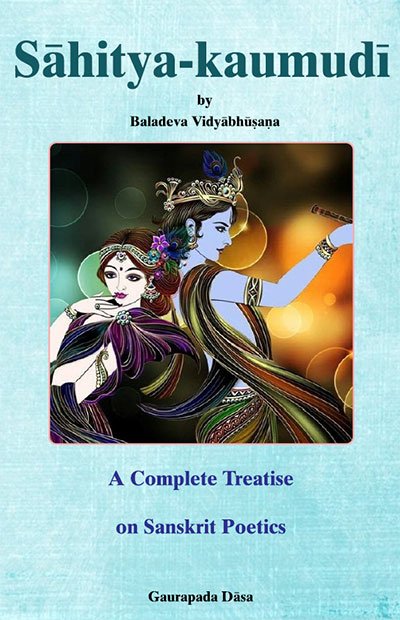Sahitya-kaumudi by Baladeva Vidyabhushana
by Gaurapada Dāsa | 2015 | 234,703 words
Baladeva Vidyabhusana’s Sahitya-kaumudi covers all aspects of poetical theory except the topic of dramaturgy. All the definitions of poetical concepts are taken from Mammata’s Kavya-prakasha, the most authoritative work on Sanskrit poetical rhetoric. Baladeva Vidyabhushana added the eleventh chapter, where he expounds additional ornaments from Visv...
Text 2.24
तत्र प्रसङ्गाल् लक्षणा-मूला निरूप्यते,
tatra prasaṅgāl lakṣaṇā-mūlā nirūpyate,
Of the two, on the occasion Suggestiveness based on Indication is described:
yasya pratītim ādhātuṃ lakṣaṇā samupāsyate ||2.14cd||
phale śabdaika-gamye’tra vyañjanān nāparā kriyā ||2.15ab||
yasya—of which [result]; pratītim—the perception; ādhātum—in order to convey; lakṣaṇā—Indication; samupāsyate—is put to use (referred to); phale—in the result (the purpose of purposeful Indication); śabda—through the word (the word that is indirectly expressive); eka-gamye—which is only knowable; atra—in it (the result); vyañjanāt—than vyañjana (also called vyañjanā); na—there is no; aparā kriyā—other action (another rhetorical function).
There is no rhetorical function other than Suggestiveness in the result, which is to be known only through the lākṣaṇika word and for the sake of being conducive to the perception of which Indication is referred to.
phalaṃ pratipādayituṃ yatra lākṣaṇikaḥ śabdaḥ prayujyate tatra nānyatas tat-pratipattiḥ, api tu tasmād eva śabdāt, tatra vṛttir vyañjanaiva.
When a lākṣaṇika word is used to bring about a result—the perception of the result does not occur from something else, rather it occurs from that very word—at that time the rhetorical function is only vyañjanā (Suggestiveness).
